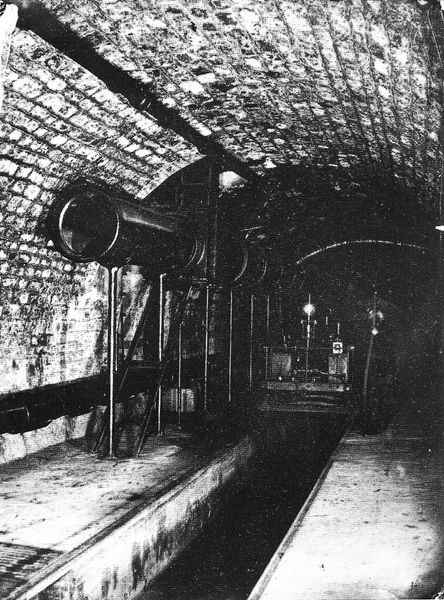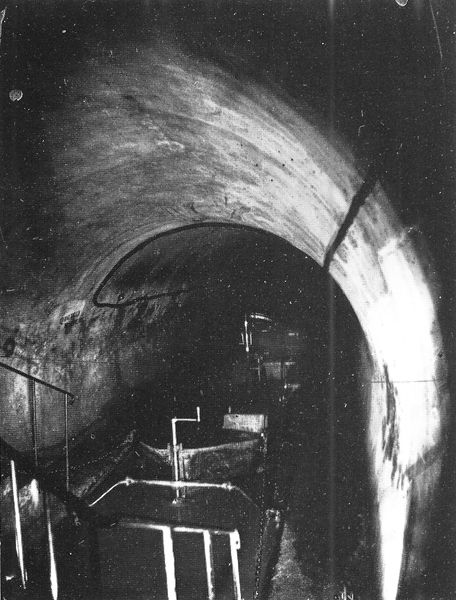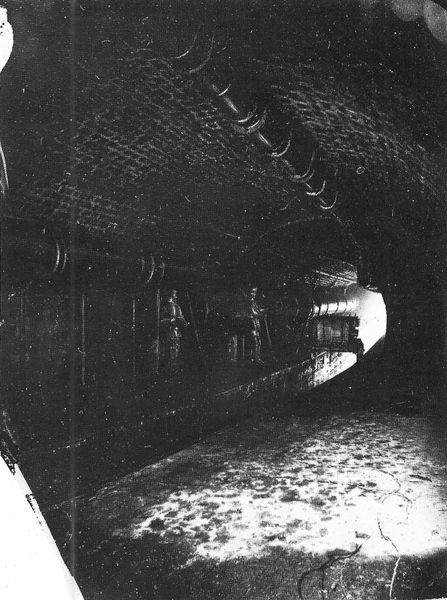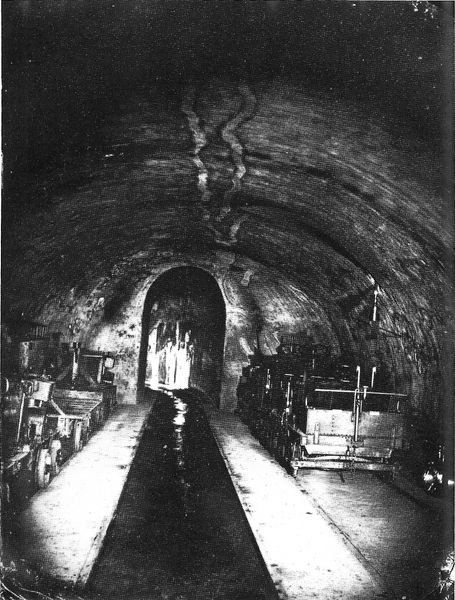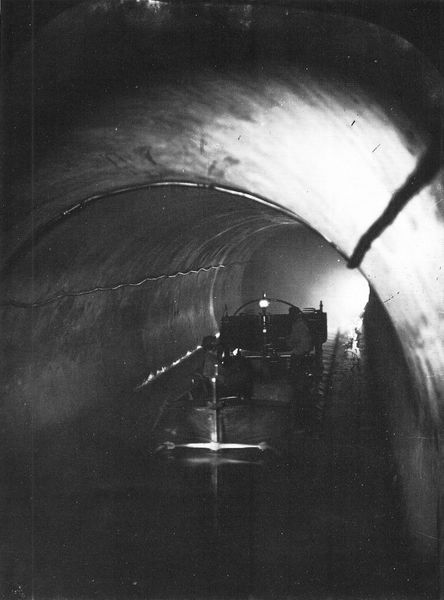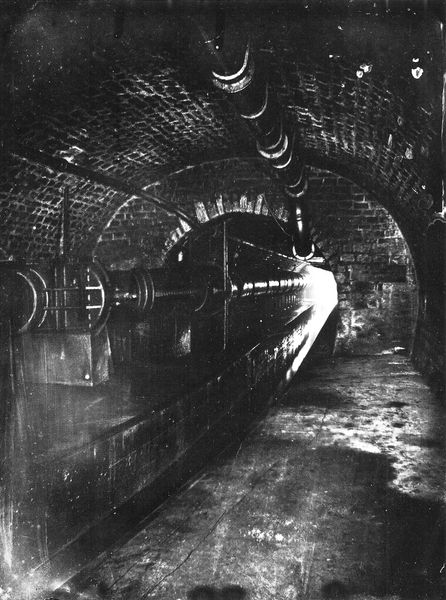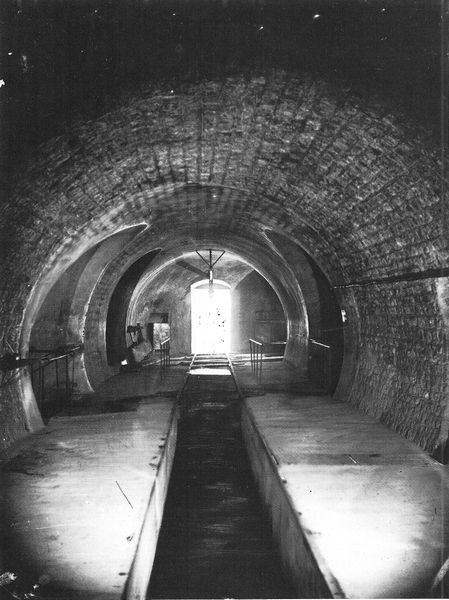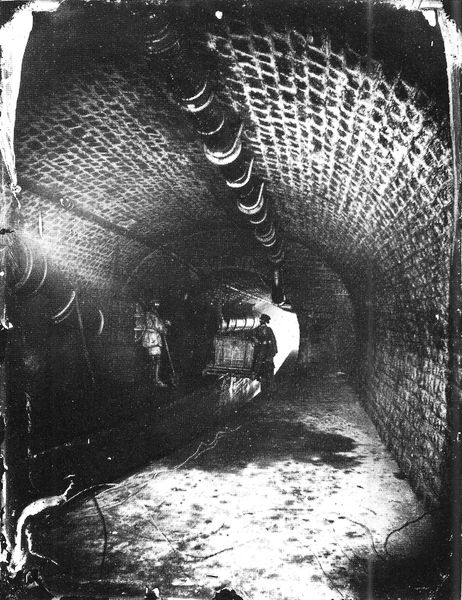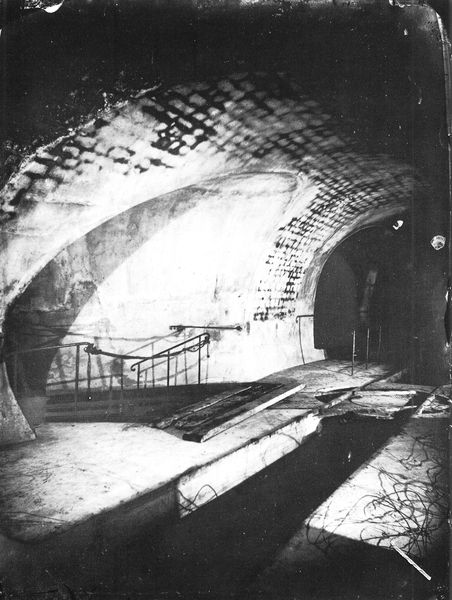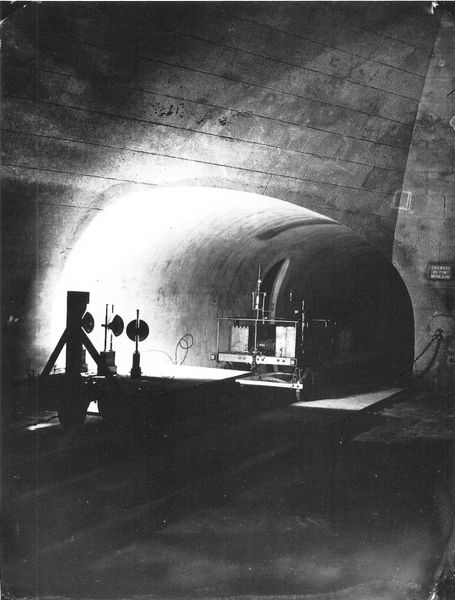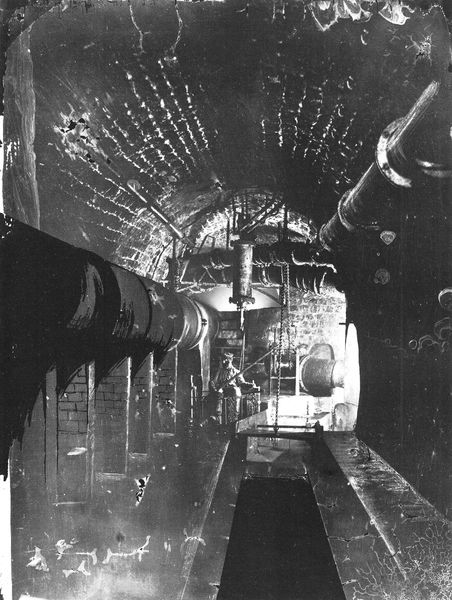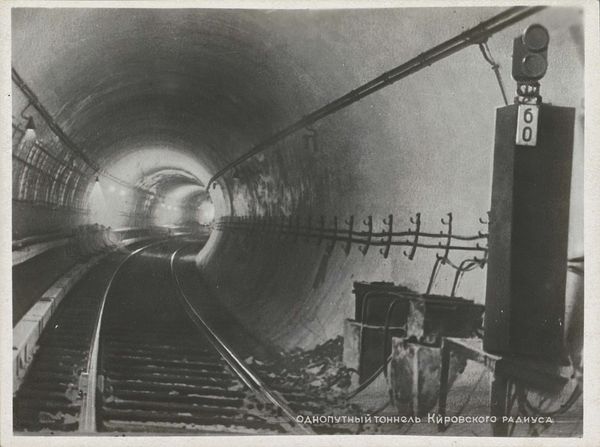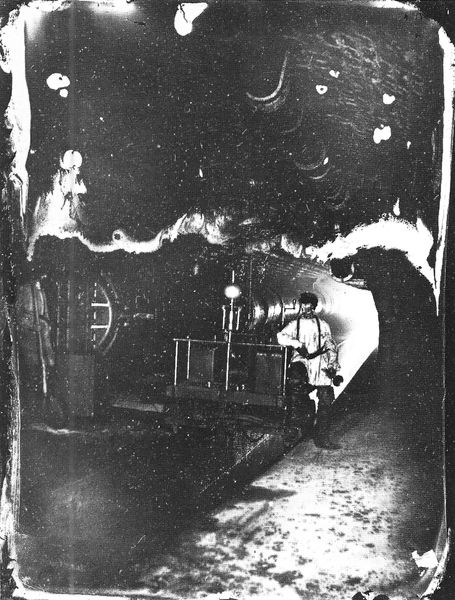
photography, gelatin-silver-print
#
black and white photography
#
impressionism
#
landscape
#
photography
#
black and white
#
gelatin-silver-print
#
monochrome photography
#
monochrome
#
realism
Copyright: Public domain
Curator: Nadar’s "Égouts de Paris," a gelatin-silver print from 1861, presents a pioneering glimpse into the Parisian sewer system. What's your immediate response to this image? Editor: The darkness is overwhelming. I see this oppressive, almost claustrophobic tunnel punctuated only by a cold, stark light, making the subterranean world seem both alien and disturbing. It makes me wonder about the people forced to toil in such conditions. Curator: Interesting. The composition is defined by that stark contrast between light and shadow, typical of Nadar's use of artificial light. The perspective guides the eye deep into the tunnel, creating a powerful sense of depth and enclosure. Observe the geometry of the tunnel’s arch and how it contributes to the image’s structural integrity. Editor: But it's more than just geometry, isn't it? Nadar's daring foray into the sewers, then considered an underworld, makes a statement. Think about the social implications: who occupied this space? Whose labor maintained it? How does this image speak to power and marginalization in Haussmann's Paris? It challenges the idealized visions of progress. Curator: I appreciate the socio-political reading. However, let’s not ignore the photographic process itself. Consider the technical feat of capturing this image in complete darkness, using artificial light and a then-untested technology. Nadar’s expertise in lighting techniques highlights the textures and materials—the stone, the water—and the metallic structure of the cart on rails. It shows a mastery of the medium, and how the limitations also became aesthetic components. Editor: Agreed. But I would say that this isn’t solely a study in contrasts or photographic mastery. This subterranean portrait reveals a part of the city that was deliberately concealed. Nadar shines a light—literally and metaphorically—on the unseen labor underpinning Parisian society, prompting viewers to question what “progress” really entails and who benefits from it. It shows the cracks beneath the surface. Curator: A vital point. Perhaps Nadar's most remarkable achievement here is his ability to blend aesthetic innovation with societal critique, a synthesis that still resonates deeply. Editor: Exactly. "Égouts de Paris" compels us to consider not just what we see, but also what we choose to ignore, and the human cost of societal advancement.
Comments
No comments
Be the first to comment and join the conversation on the ultimate creative platform.
